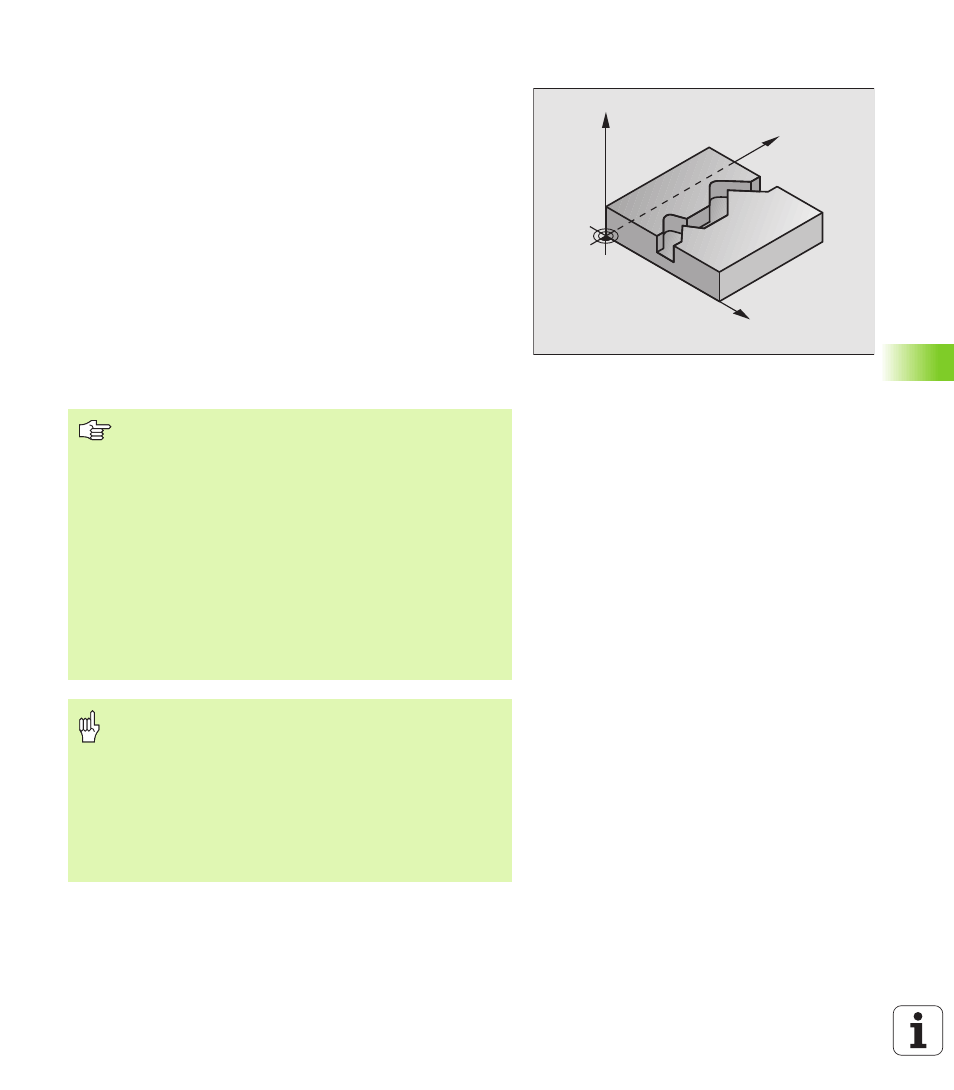Contour train (cycle g125), G125 contour train – HEIDENHAIN TNC 410 ISO Programming User Manual
Page 301

HEIDENHAIN TNC 410, TNC 426, TNC 430
275
8.7 SL Cy
cles Gr
ou
p II (no
t T
N
C
4
1
0)
CONTOUR TRAIN (Cycle G125)
In conjunction with Cycle G37 CONTOUR GEOMETRY, this cycle
facilitates the machining of open contours (i.e. where the starting
point of the contour is not the same as its end point).
Cycle G125 CONTOUR TRAIN offers considerable advantages over
machining an open contour using positioning blocks:
n
The TNC monitors the operation to prevent undercuts and surface
blemishes. It is recommended that you run a graphic simulation of
the contour before execution.
n
If the radius of the selected tool is too large, the corners of the
contour may have to be reworked.
n
The contour can be machined throughout by up-cut or by climb
milling. The type of milling even remains effective when the
contours are mirrored.
n
The tool can traverse back and forth for milling in several infeeds:
This results in faster machining.
n
Allowance values can be entered in order to perform repeated
rough-milling and finish-milling operations.
Y
X
Z
Before programming, note the following:
The algebraic sign for the cycle parameter DEPTH
determines the working direction. If you program DEPTH
= 0, the cycle will not be executed.
The TNC takes only the first label of Cycle G37 CONTOUR
GEOMETRY into account.
The memory capacity for programming an SL cycle is
limited. For example, you can program up to 128 straight-
line blocks in one SL cycle.
Cycle G120 CONTOUR DATA is not required.
Positions that are programmed in incremental dimensions
immediately after Cycle G125 are referenced to the
position of the tool at the end of the cycle.
Danger of collision!
To avoid collisions,
n
Do not program positions in incremental dimensions
immediately after Cycle G125, since they are referenced
to the position of the tool at the end of the cycle.
n
Move the tool to defined (absolute) positions in all main
axes, since the position of the tool at the end of the
cycle is not identical to the position of the tool at the
start of the cycle.
